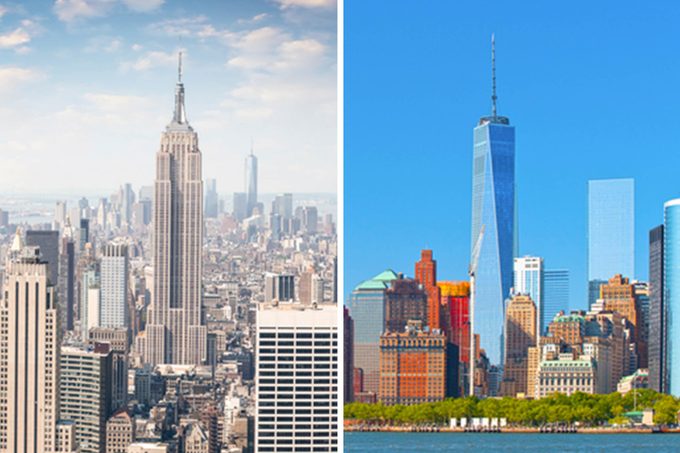
Unique Facts About the United States
The United States is full of fascinating and often surprising facts that highlight its diverse geography, history, and culture. From unique zip codes to peculiar geographical features, there's always something new to learn about this vast country.
Zip Codes and Geography
New York City is one of the most densely populated areas in the world, and its complexity is reflected in its postal code system. Manhattan alone has over 300 zip codes, with some skyscrapers even having their own exclusive zip codes. The Empire State Building, Chrysler Building, and MetLife Building are among the structures that have their own unique postal codes.
Alaska, the largest state in the U.S., holds a special distinction as both the westernmost and easternmost state. This is due to the Aleutian Islands, which extend into the Eastern Hemisphere. Meanwhile, in Connecticut, if you drive in any direction from Stamford, you will eventually reach New York. However, an amphibious vehicle would be necessary for the journey eastward.
Nevada’s Reno is also notable for being farther west than Los Angeles, despite being inland. While California is often thought of as the westernmost state, Reno’s location makes it more westward than the coastal city.
Interesting State Capitals and Cities
Boston and Austin are the only two U.S. state capitals with rhyming names, making them unique in the country. Another interesting fact is that Alaska and Hawaii are the only states that do not share borders with any other U.S. state. In contrast, Missouri and Tennessee each border eight states, the most in the country.
When it comes to size, the four largest U.S. cities by area are all located in Alaska: Sitka, Juneau, Wrangell, and Anchorage. These cities cover vast expanses of land compared to more populous urban centers like New York or Los Angeles.
Natural Wonders and Historical Anomalies
The United States is home to several natural wonders. For instance, the Roe River in Montana is the shortest river in the world, flowing only about 201 feet. Additionally, Hawaii’s Mauna Kea is taller than Mount Everest when measured from the seafloor, though it only reaches 13,796 feet above sea level.
Historically, the first capital of the United States was New York City, not Washington, D.C. as many might assume. Los Angeles had a much longer name initially, known as El Pueblo de Nuestra Señora la Reina de los Ángeles de Porciúncula, before being shortened to "L.A."
Cultural and Geographical Curiosities
Only one U.S. state grows coffee, and that is Hawaii. Even more surprisingly, the famous pineapples of Hawaii were originally imported from South America, with Florida once being the primary U.S. pineapple state.
Nebraska is the only U.S. state that is “triply landlocked,” meaning it is three states away from the ocean on all sides. Meanwhile, the U.S. borders three oceans: the Atlantic, Pacific, and Arctic. This includes Alaska’s northern coast, which touches the Arctic Ocean.
Another intriguing fact is that a piece of Africa lies beneath Alabama, a remnant of the ancient supercontinent Pangaea. Additionally, during the Last Glacial Maximum, the western U.S. was home to massive lakes that rivaled the Great Lakes in size.
Modern and Practical Facts
Montpelier, Vermont, is the only U.S. capital without a McDonald’s, and it's also the smallest capital city in the country. The U.S. border is not only adjacent to Canada and Mexico but also to Russia, Cuba, and the Bahamas when considering oceanic boundaries.
In terms of population, California has more residents than all of Canada combined. And while California is often associated with earthquakes, Alaska actually experiences more seismic activity due to its location on a fast-moving tectonic plate.
These facts illustrate the incredible diversity and complexity of the United States, offering insights into its geography, history, and unique characteristics. Whether it's through zip codes, rivers, or historical events, the U.S. continues to surprise and captivate those who explore its many facets.
